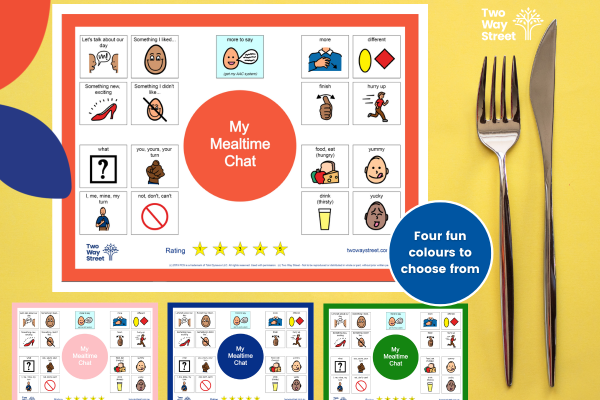
The land of make believe: how and why to encourage pretend play
The word “imagination” conjures up images of children pretending with dolls, pushing dump trucks, or dressing up as princesses or pirates. While young children do spend much of their time in the land of make believe, the imagination is not just reserved for children’s play. It is because of the development of the imagination during childhood that adults are able to do many of the tasks that daily life demands. Adults constantly use their imagination to help them invent new things, visualise, solve problems, enjoy a book or movie, understand others’ perspectives, make plans, come up with ideas, and think creatively. No wonder Albert Einstein felt that “imagination is more important than knowledge”! Therefore, using one’s imagination is a critical cognitive skill that is used throughout life, and it is important to encourage the imagination in childhood.
But what is the connection between pretend play and language?
The connection between pretend play and language
Pretend play is also known as “symbolic play” because it involves the use of symbols. When we use symbols, we use something to stand for something else. In the case of pretend play, children may use one object to stand for another, such as pretending a spoon is a hairbrush, or a tablecloth is a cape. This type of symbolic thought is also needed for language, as our words are symbols. Our words stand for our thoughts and ideas. Therefore, pretend play and language both involve the same underlying ability to represent things symbolically (Weitzman and Greenberg, 2002). It’s no wonder children start to engage in pretend play around the same time their first words emerge (between 12 to 18 months). Furthermore, children who have language difficulties sometimes also struggle with pretend play.
Why encourage pretend play?
There are many reasons why parents and caregivers should consider encouraging their child’s pretend play skills:
- Your child will gain practice with using symbols. This strengthens the foundation for your child’s pretend skills and language skills.
- Pretend play is an excellent way to expose your child to new vocabulary that he may not be exposed to in everyday life, such as “pirate”, “sword”, “rescue”, “castle”, or “fairy”.
- When you pretend with your child, you will help him learn to play with others. Eventually, your child will start to pretend with other children, where he will learn to take turns and collaborate.
- When children take on a pretend role, they imagine what it is like to be another person. This helps develop their ability to take others’ perspectives and develop empathy.
- Pretend play is fun! When you play like a child and let your imagination lead, you and your child will never run out of things to play with or talk about!
How pretend play develops (adapted from Learning Language and Loving It, Weitzman and Greenberg, 2002)
In typical development, pretend play progresses through predictable stages. Children with developmental delays may progress through these stages at a slower rate.
Self-pretend (12-18 months)
During this stage, children perform one pretend action at a time on themselves, such as pretending to eat, drink, or sleep. Children tend to use toys that look quite realistic (e.g. a plastic toy spoon) or real-life objects (e.g. a real spoon).
Simple pretend (18-24 months)
Children at this stage perform simple pretend actions on toys or people. Children continue to use realistic-looking toys at this stage. Examples of simple pretend play include feeding a doll with a toy fork or making a toy airplane “fly”. Children also imitate familiar adult actions at this stage, such as pretending to talk on a toy telephone.
Series of familiar actions (24-30 months)
Just as children this age are learning to combine words together to make little sentences, they are also learning to combine pretend actions together. At this stage, children can act out a series of pretend actions related to a familiar routine, such as the steps involved in eating or going to bed. For example, the child may get out a toy bowl and spoon, pretend to pour cereal into the bowl, add some milk, and serve it to a doll. Children can use less realistic objects at this stage, as long as they are similar in shape to the real object. For example, a toy ball could be used as an apple to feed a doll.
Series of less familiar actions (30-36 months)
Less familiar themes enter children’s play at this stage. They may pretend about going to the doctor or being a waiter at a restaurant. Children can pretend without an object (they can pretend their hand is a cup and drink out of it). Children can also substitute objects that do not resemble the “real thing”. For example, a child can pretend a block is a garbage truck on its way to the dump.
Role play with other children (3-5 years)
Children pretend about imaginary themes now (things which do not really exist or that the child hasn’t experienced yet in real life), such as pirates, castles, and superheroes. Children start to pretend with other children at this stage, each taking on different roles during the play. Realistic objects and toys are not needed as children can now pretend using gestures, mime, or unrealistic objects. Language often drives the play at this stage. Children explain their roles and use language to act out their role. For example, a child pretending to be a doctor might say to another child “I’m the doctor, you be the patient, ok? Where does it hurt?”
Encourage pretend play – The “Hanen” way!
Playing the “Hanen” way means getting down to your child’s level and playing like a child yourself. By following the simple tips below, you will be stimulating your child’s pretending skills and language, and the two of you are sure to have fun in the process!
- Be face-to-face (on the floor, across from each other at a table, etc). In this way, your child will feel connected to you, and he will be able to see your face, gestures, and pretend actions.
- Observe your child’s interests. After you have put out a few pretend toys, watch and see what catches his interest. If he picks up a toy phone, play with it. If he starts to push a truck, play trucks. Your child will be motivated to play with you if you follow his lead.
- Don’t put out too many toys at once. This can be overwhelming to some children. Select a few key toys that you think your child may like.
- If your child doesn’t know how to pretend yet – you might need to start off the play. Pick up a toy your child likes and do one simple action yourself to give your child the idea. For example, you could demonstrate some self-pretend (see above) by picking up a toy cup and pretend to drink, saying “mmm…yummy juice”. Then put the cup in front of your child and wait to see if he imitates you. If he doesn’t, that toy may not interest your child. Try to observe your child’s interests to determine if something else might be more interesting to him.
- Imitate your child’s pretend actions. Observe what your child does with his toys, and then imitate his actions. This will likely motivate your child to do more pretend actions! Eventually, you can try introducing a new but related action to the play. For example, if your child has been pushing a dump truck, you can try adding some blocks to the back of the dump truck and dumping them out. Do this once, then wait to see what your child does next.
- Keep it simple. There’s no need to introduce too many new pretend ideas at once. Children love repetition and learn from it, so they will likely enjoy practicing any new pretend actions over and over again.
- Don’t just watch from the sidelines – get “into” the play! It is easy to become a “narrator” when playing with your child, and provide a play-by-play from the sidelines about what your child is doing. A narrator says things like “Oh, you are feeding the baby. You are taking such good care of your baby”. If you have a toy in your hand and play yourself, it will ensure that you are “in” the play and playing with your child, not on the outside providing narration. Being ‘in’ the play gives your child more chances to learn because it allows for more interaction and conversation.
- Take turns. When children aren’t pretending very much, it’s easy to take over the play in an attempt to show your child what to do. After you have done something with your toy, be sure to pause and wait so that your child can have a turn to do something. In this way, your play together will be a back-and-forth “conversation”, in which each of you has a chance to say or do something.
- Introduce new ideas. For children who can link some familiar pretend actions together, the goal is to encourage less familiar themes. For example, if a child enjoys pretending with vehicles, you could introduce a less familiar theme by having the cars break down and taking them to the mechanic. Or perhaps superheroes could drive the cars as they save the day! Or if a child enjoys doll play, you could introduce the idea of a fairy coming to visit the doll, or maybe the doll could visit a castle to see the princess.
- Expose your child to new experiences. Every time you go somewhere new with your child, this becomes the raw material for pretend play. A trip to the zoo can spark a whole new play theme for your child. Books also allow you to introduce imaginary themes to your child which can be incorporated into pretend play.
- Choose the right toys. For ideas about selecting toys that encourage pretend play, read the Hanen article “Toys that kickstart the imagination “.
By getting in touch with your own “inner child” and using your imagination, you will discover a new way to connect with your child. When you follow your child’s lead, you will learn more about your child and his play interests. Your child will be very motivated to play with you in this way and feel very connected to you. And while it may look to others like you two are just messing around with trucks on the floor, you are really helping your child think symbolically and develop critical thinking skills that he will use throughout his life.
About The Hanen Centre
The Hanen Centre is a not-for-profit organisation committed to promoting the best possible language, literacy and social skills for young children. This includes children who have or are at risk for language delays, those with developmental challenges such as autism, and those who are developing typically. For more information, please visit www.hanen.org. ReferencesWeitzman, E. Greenberg, J. 2002. Learning Language and Loving It: A guide to promoting children’s social, language, and literacy development in early childhood settings. Toronto: The Hanen Centre.







